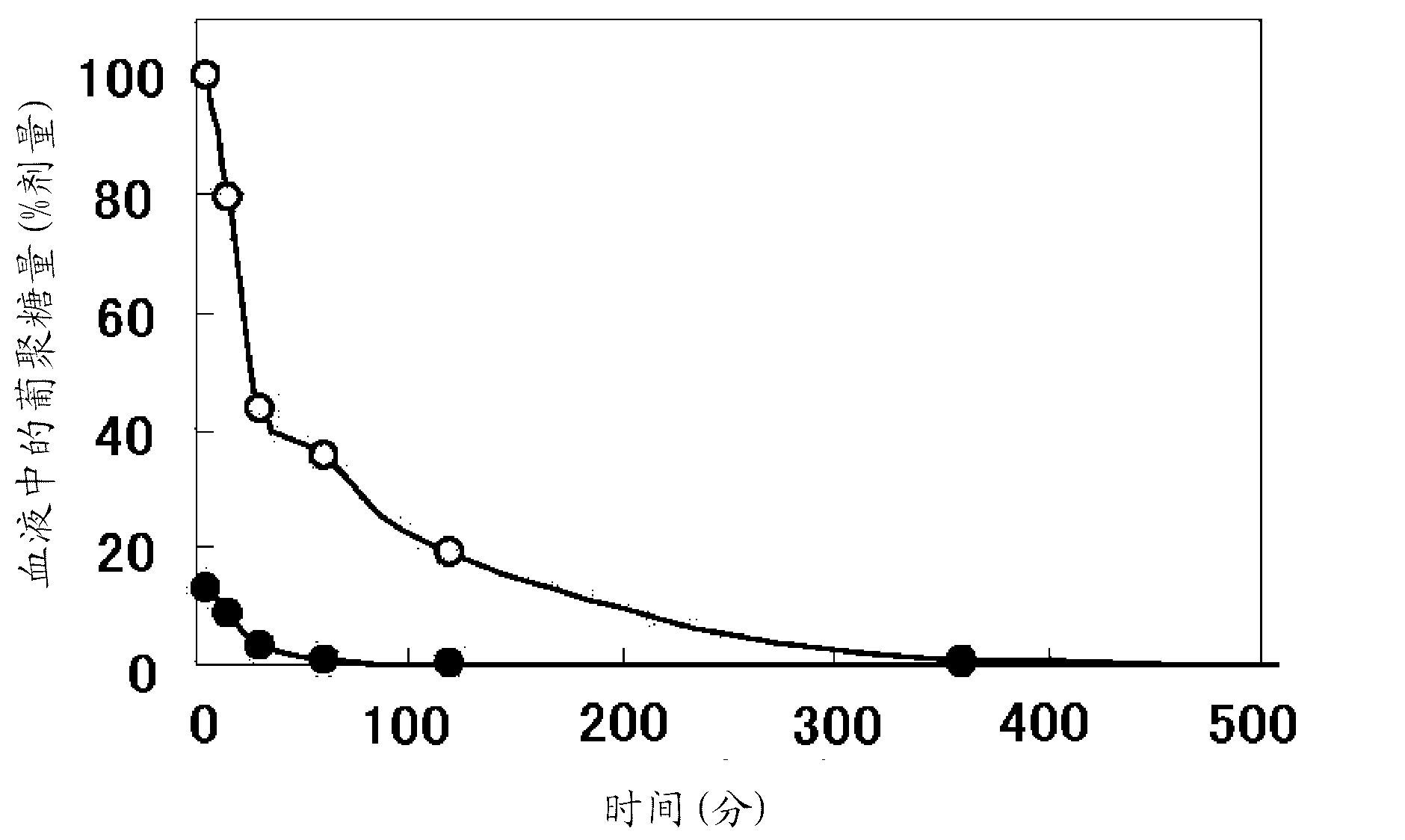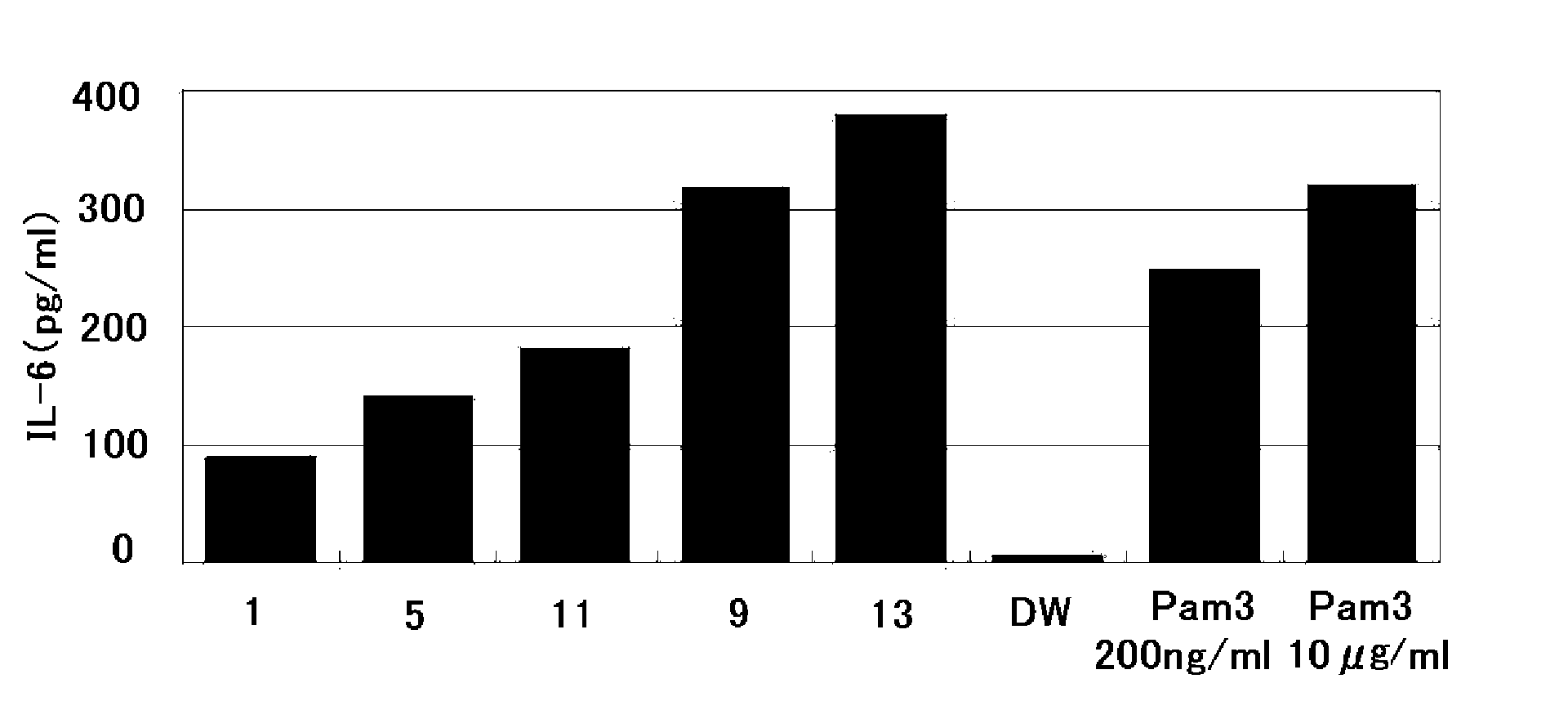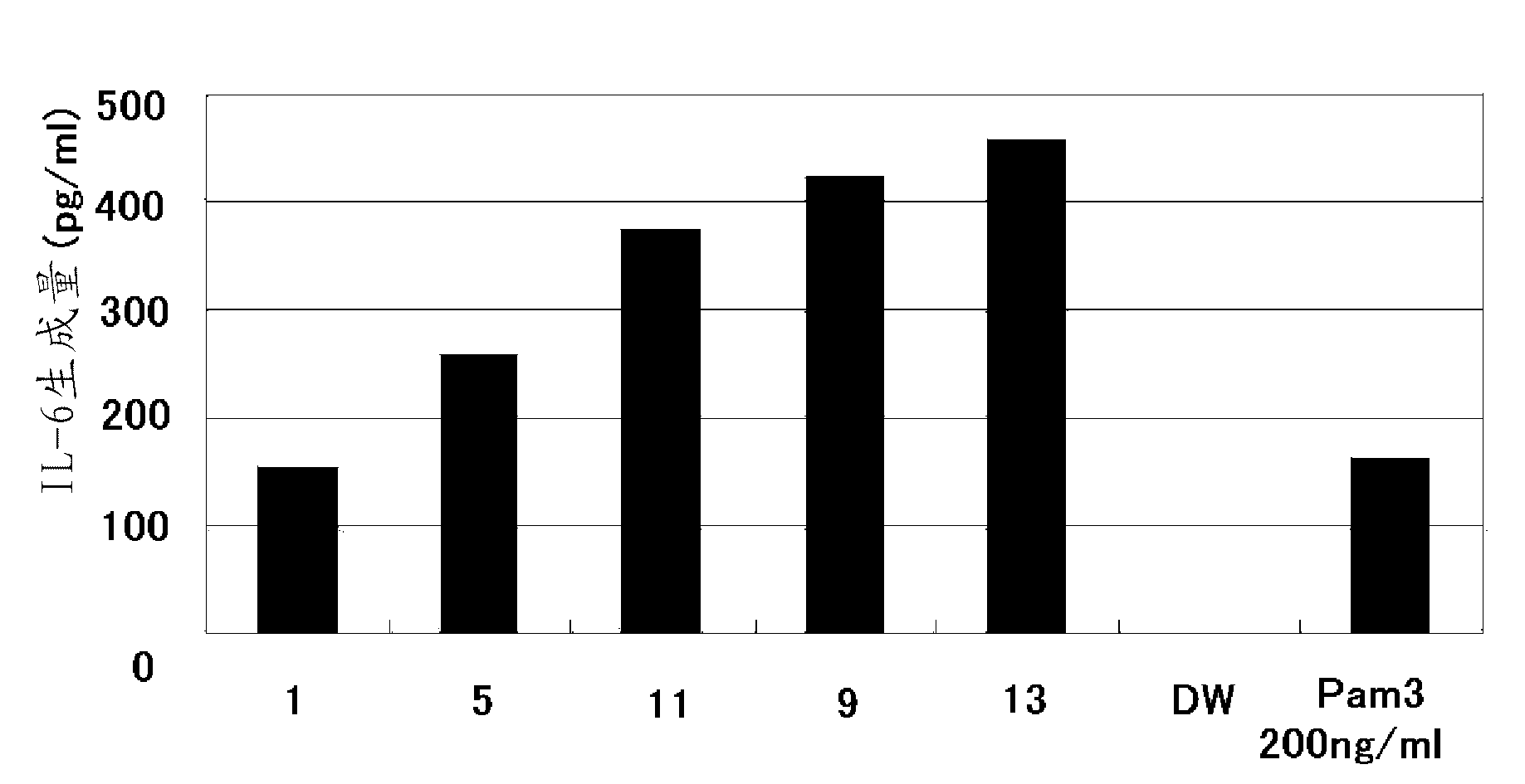Non-reducing end-odified glucan, method for producing same, and use thereof
A glucan and modified technology, applied in the field of glucan, can solve the problems of weak immune adjuvant activity, etc., and achieve the effect of easy design
- Summary
- Abstract
- Description
- Claims
- Application Information
AI Technical Summary
Problems solved by technology
Method used
Image
Examples
preparation example 1
[0328] (Preparation Example 1: Preparation of α-glucan phosphorylase derived from Hyperthermophilus VF5)
[0329] The α-glucan phosphorylase derived from Hyperthermophilus VF5 was recombinantly produced by the following method.
[0330] (A) Preparation of α-glucan phosphorylase gene derived from hyperthermophilus VF5
[0331] Chemically synthesize the amino acid sequence (the amino acid sequence described in SEQ ID NO: 2 of the Sequence Listing) that encodes the α-glucan phosphorylase gene derived from Hyperthermophilus VF5 by methods known to those skilled in the art; The base sequence (GenBank base sequence obtained from the base sequence of ACCESSION No. AE000657 No. 491380 to No. 493458 (SEQ ID NO: 1) of the GenBank base sequence database of the National Center for Biotechnology Information (NCBI) 491380 to 493458 of ACCESSION No. AE000657 of the base sequence database) nucleic acid (also referred to as "α-glucan phosphorylase gene"). An NdeI site was created upstream of...
preparation example 2
[0337] (Preparation Example 2: Preparation of branched dextran)
[0338] 50 g of waxy cornstarch (manufactured by SANWA CORNSTARCH CO., LTD) was suspended in 1,000 ml of 10 mM sodium phosphate buffer (pH 7.0), and the suspension was heated to about 100° C. for gelatinization. 200,000 units of a highly thermostable branched enzyme prepared according to the method described in Example 1 of Japanese Laid-Open Publication No. 2000-316581 was added to the starch paste that had been cooled to about 70° C. to prepare a reaction solution, which was then allowed to stand in React at 70°C for 16 hours. After the reaction solution was heated at 100° C. for 20 minutes, the supernatant after centrifugation at 6,500 rpm for 10 minutes was filtered with a membrane having a pore size of 0.8 μm. Then, the filtrate was subjected to gel filtration chromatography (AKTA purifier) system (column: HiPrep produced by GE Healthcare TM 26 / 10 Desalting) to remove low molecular weight polysaccharide...
preparation example 3
[0340] (Preparation Example 3: Recombinant Preparation of Recombinant Potato α-Glucan Phosphorylase)
[0341] L-type potato α-glucan phosphorylase was recombinantly produced by the following method shown in Japanese National Phase PCT Publication No. 2004-526463.
[0342] Creation of BamHI sites upstream and downstream of the potato glucan phosphorylase gene (Nakano et al., Journal of Biochemistry 106: 691-695 (1989); SEQ ID NO: 3 encoding the amino acid sequence of SEQ ID NO: 4) , this gene was cut with BamHI and incorporated into pET3d (manufactured by STRATAGENE) which had been cut with BamHI in advance to obtain plasmid pET-PGP113. In this plasmid, the glucan phosphorylase gene is positively linked under the control of an isopropyl-β-D-thiogalactopyranoside (IPTG)-inducible promoter. This plasmid was introduced into Escherichia coli TG-1 (manufactured by STRATAGENE) by the competent cell method. This Escherichia coli was spread on a plate containing LB medium (1% trypton...
PUM
| Property | Measurement | Unit |
|---|---|---|
| particle size | aaaaa | aaaaa |
| particle size | aaaaa | aaaaa |
| molecular weight | aaaaa | aaaaa |
Abstract
Description
Claims
Application Information
 Login to View More
Login to View More - R&D
- Intellectual Property
- Life Sciences
- Materials
- Tech Scout
- Unparalleled Data Quality
- Higher Quality Content
- 60% Fewer Hallucinations
Browse by: Latest US Patents, China's latest patents, Technical Efficacy Thesaurus, Application Domain, Technology Topic, Popular Technical Reports.
© 2025 PatSnap. All rights reserved.Legal|Privacy policy|Modern Slavery Act Transparency Statement|Sitemap|About US| Contact US: help@patsnap.com



